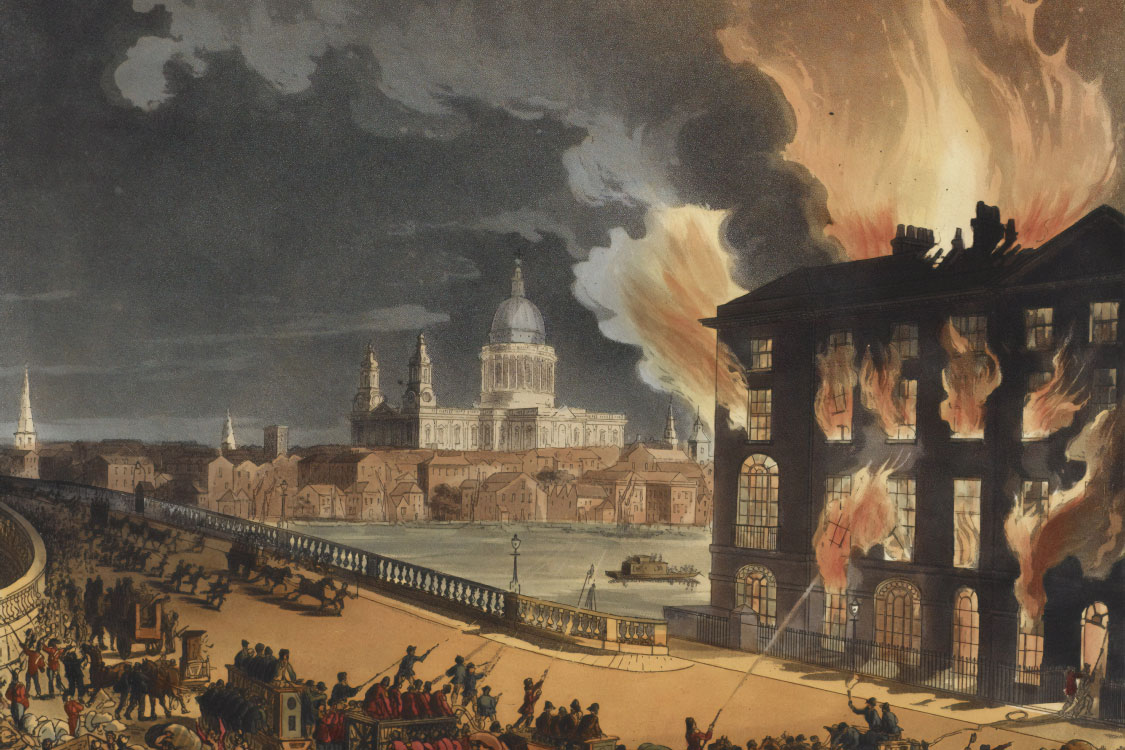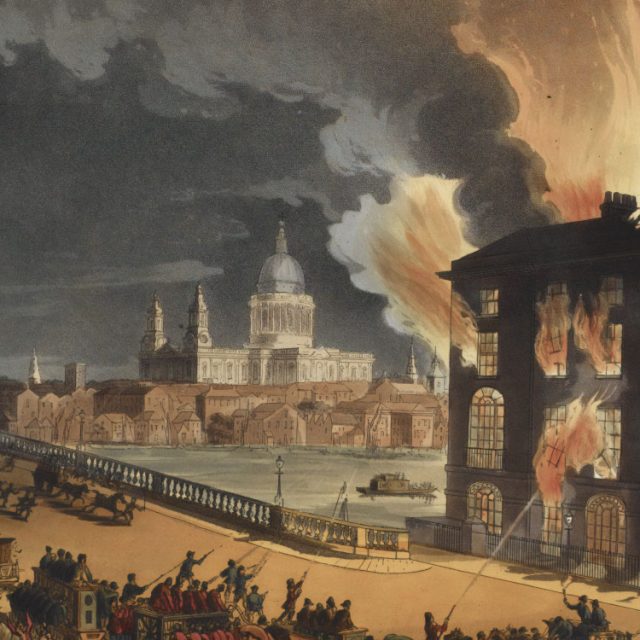19 May 2021
The Great Fire of London
The Great Fire of London, unsurprisingly, is one of history’s most famous fires. In fact, it can probably be classed as one of the UK’s most significant historical occurrences, causing untold damage throughout the capital and even now serving as a reminder of the devastating potential of fire. In this article, the team at Fire & Security Group are going to look at the events of the Great Fire of London and how the fire came to cause such damage.
The fire started in a bakery on the 2nd of September 1666, in a bakery in Pudding Lane, near London Bridge. It wasn’t as if the bakery was set ablaze – it was a small fire – but people were slow to react, and this lack of action coupled with other avoidable and unavoidable factors meant that the fire soon became impossible to control.

Wind
The wind played a huge role in the spread of the fire. A strong easterly wind blew across the capital, which just pushed the flames across neighbourhoods. The delayed reaction was hampered further still by the intervention of the wind – there might have been a small chance to regain some control soon after the fire was noted, but the wind put paid to that.
Housing Materials
It goes without saying, but fire safety knowledge wasn’t exactly first-rate in the 1600s. Today, all construction projects undergo rigorous safety checks and inspections, and all projects are carried out in accordance with fire safety regulations. In 1666, though, the majority of homes were made from wood – the perfect material for setting alight. To make matters worse, there hadn’t been any rain for some time, so the wood was dry, meaning they went up in flames extremely quickly.
Acting too Late
King Charles II was informed of the fire, and his proposed course of action was to pull down houses in the path of the fire to create a fire break. However, as the fire was moving so quickly, the houses couldn’t be pulled down in time and the fire continued to wreak havoc across London. Eventually, a decision was made to blow up the houses that were in the path of the fire but hadn’t yet burned – this method was more successful and it helped to bring the fire under control.
Aftermath
The fire lasted for four days. By the time it had been extinguished on 6th September, ⅘ of the capital had been destroyed. The damage was estimated at around £7 million, which equates to around £37 billion in today’s money. While only six people were killed by the fire, the temporary housing that was erected afterwards wasn’t very sanitary, and many people died as a result of diseases spreading throughout the accommodation.
It’s very unlikely that we’ll see a fire like that ever again, partly because of the materials used for modern buildings, but mainly because our fire safety methods and services are incredibly efficient and effective. From fire alarms and sprinkler systems to the brilliant emergency services, we have a lot of tools at our disposal to prevent and combat fires from breaking out and spreading.
Fire & Security Group are experienced, skilled and knowledgeable suppliers of fire alarms, fire risk assessments and fire safety training for businesses around the country. If you’d like to know more, or if you’d like to enquire about our services, simply contact us today and we’ll be happy to help.


